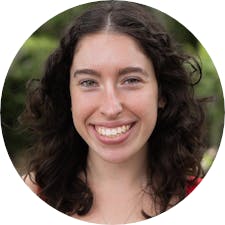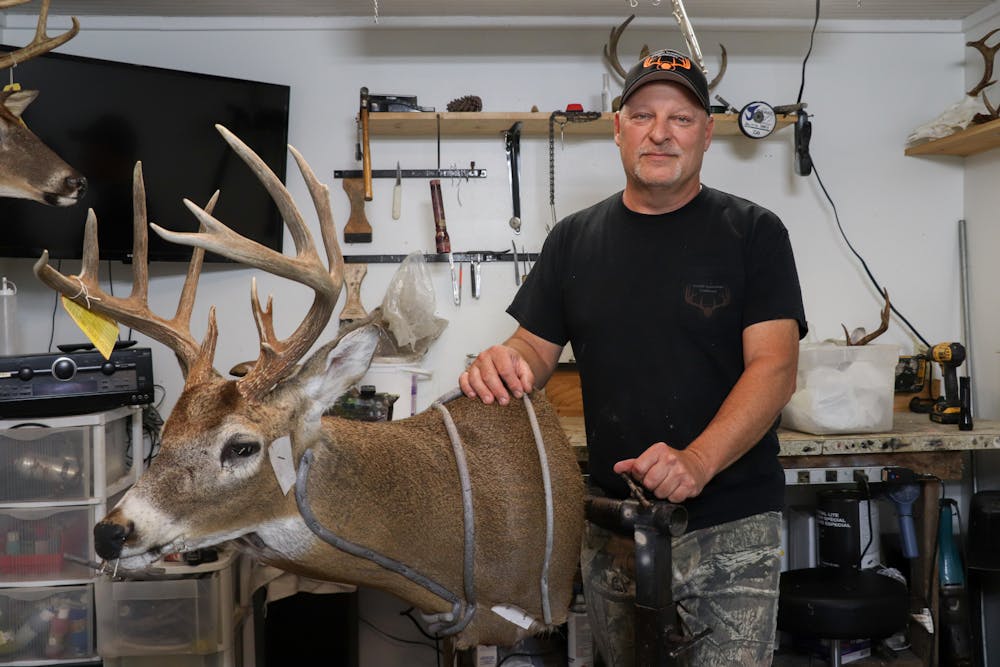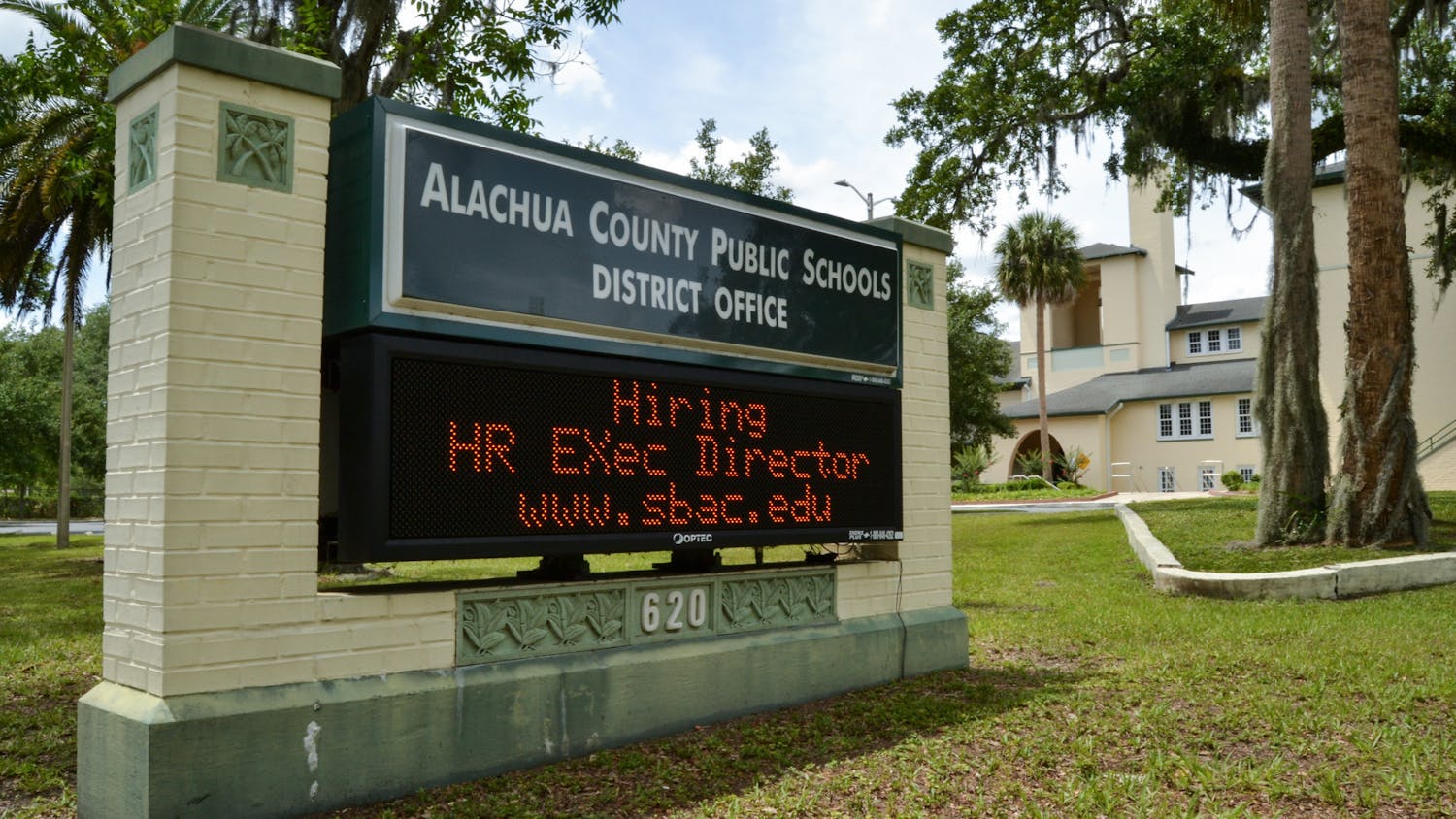There’s no shortage of deer in Jack Patton’s home. Taxidermy mounts adorn just about every wall, antlers hang from drying racks in his studio and decapitated heads wrapped in trash bags fill the freezers.
Each time Patton looks at the deer, he can envision the very day he shot it.
“When you sit in your house in your living room, for me, I look back at any of my deer, I look back and think back to when I was hunting,” Patton said. “I sat in that tree, I can remember the sun coming up, I can remember the events.”
When he’s not busy driving fire trucks for the Alachua County Fire Rescue, 54-year-old Patton, who goes by “JJ” with his friends, runs Wildlife Transitions Taxidermy, a company that grew from his passion for taxidermy.
His studio is nestled in a riverside neighborhood in Steinhatchee, Florida, in Florida’s Big Bend region. Patton and his wife moved there from Lake City, Florida, less than a year ago, but he’s no stranger to the area, he said. His current home in Steinhatchee used to be a temporary home he visited while on fishing trips along the coast.
Patton learned to do taxidermy around the year 2000 from a neighbor who lived down the road from him in Gilchrist County, west of Alachua County.
With his friend guiding him — and with the help of YouTube — Patton started to pick up small details that made all the difference in his craft. He pays special attention to the crinkle in the deer’s eyelid, the shape of its ear muscles and the color inside its nose.
“Taxidermy is an art form,” he said. “It just never rings more true that you get what you pay for. You want the animal to look lifelike and you want it to last.”
A deer mount typically takes 10 hours of work to complete, Patton said. He prides himself on returning animals within a year of clients dropping them off.
The process involves removing the animal’s skin and antlers, cleaning them, preparing them and then reattaching them to a styrofoam mold using glue, clay and threaded needles. Taxidermy is a fairly precise art: Leave the animal out of the freezer for too long, it starts to decay; let the hide dehydrate for too long, it’s too tough to mold.
As Patton developed his skills, taxidermy grew from a hobby into a business.
Now, clients from across the state drive, ship or deliver their game exclusively to Patton’s Steinhatchee residence for him to mount. A deer head mount goes for about $700 — a reasonable price, Patton’s friend and client Pat Morris, 61, said.
Patton and Morris met around 2003 during their shared time working for the Alachua County Fire Rescue.
Day-long shifts at the fire department gave the pair ample time to get to know each other. After discovering they were both the outdoorsy type, Morris said, they naturally gravitated to each other.
“It's a cliche, but you end up putting your life in someone else's hands, and they put theirs in yours,” Morris said. “So it becomes a pretty tight bond.”
They’ve taken hunting trips together out of state, and Morris has a deer mounted on his wall from the first trip to Kansas they made together. About five of Morris’ mounts were done by Patton.
“He's an artist,” Morris said. “He takes your memories, what you describe, the pictures you show him of your harvest, and then he puts that all together. And you have essentially a three dimensional painting of that memory.”
Although Patton specializes in deer, he preserves all types of mammals, including a moose hunted in Canada by a Miami boy as part of the Make-a-Wish Foundation.
He’s done all sorts of animals, including some from overseas for a customer who brought a gazelle, giraffe and other game from a safari hunt in Africa.
Once Patton receives them, no two animals are the same: They look in different directions and have different eye shapes. Patton’s job is to breathe life back into the animal, designing it to the customer’s preference.
“I'm here to please,” he said. “It’s your money. So, I mean, if you're happy with what's on the wall, I'm happy.”
Patton is an avid hunter — he takes five or six trips a year to hunt in different states, he said. He visited Wyoming in September and has trips planned to Kansas and Kentucky still. November is the peak of fall hunting season, both for himself and for clients bringing in animals for taxidermy.
Despite enjoying hunting, Patton said he doesn’t take joy from killing the animals.
“I actually feel a little remorse, a little bit, I ain’t gonna lie,” he said.
But he considers hunting an important part of species control, particularly in the forested and swampy parts of Florida’s nature coast, he said.
Forests encompass both sides of the road on the drive from Steinhatchee to Gainesville — the same drive Patton makes at 5:30 a.m. to get to work at the fire station. If it weren’t for hunting, he said, too many people would hit deer in the road, running the risk of the deer’s antlers piercing through the windshield.
Carolina Baruzzi, a UF wildlife ecology and conservation professor, agreed hunting is important to wildlife conservation, partially because of the amount of money brought in for conservation efforts through hunting charters, permits and licenses.
If humans were to stop hunting completely, it wouldn’t benefit many species, she said.
“Different species require different types of management, but either way, hunting is pretty important,” she said.
Florida resident hunters annually pay $17 for a hunting license and another $5 for a permit to take home a deer. Out-of-state hunters pay a fair amount more for their Florida licenses, at $151.50 per year, according to the Florida Fish and Wildlife Conservation Commission.
A more recent concern for deer hunters and taxidermists alike is the spread of chronic wasting disease, or CWD, a contagious neurological disease passed between deer. The FWC detected the first case of CWD in Florida in June, and it has been monitoring the disease since.
To keep track of the disease, Patton and other hunters are partnering with the FWC to collect deer heads for testing. The FWC will provide Patton with a freezer, he said, and pay him to store more deer before officials can pick them up to check for CWD.
Looking ahead, Patton is passing on his craft to the next generation of taxidermists. Devin Handy, 22, shadowed Patton when they both lived in Lake City, and he worked on taxidermy projects, including the moose, a bobcat and a coyote.
Handy remembers working on one particularly frustrating bobcat that refused to fit properly on the mold — it was his favorite memory from working with Patton, he said.
“Every time we put the skin on it, something wouldn't fit right,” he said. “So we have to take it back off, shake it down, put it back on, and another part wouldn’t fit.”
Although Patton plans to retire from the fire department within the next seven years, he’ll continue doing taxidermy in his free time, both for the extra income and because he likes it, he said.
“It's about the people, making them happy,” he said.
Contact Alissa Gary at agary@alligator.org. Follow her on Twitter @AlissaGary1.

Alissa is the Fall 2025 editor-in-chief of The Alligator. She has previously been engagement managing editor and university editor, and she has covered stories across UF and Gainesville. She was also an intern at the Orlando Sentinel and The Chronicle of Higher Education. In her free time, she likes to spend time with her cat and take care of her plants.






